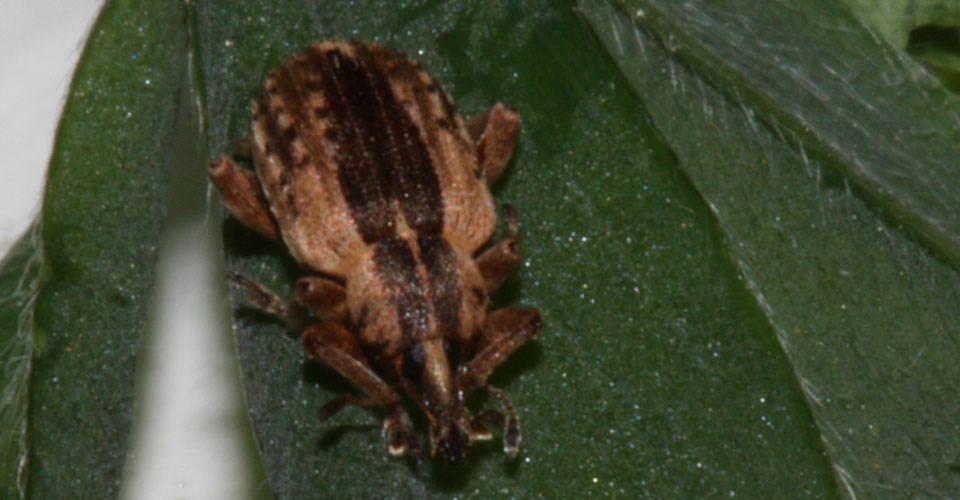Dry conditions in north central Kansas and other areas have contributed to the relative damage caused by alfalfa weevils in the state’s crop, according to Kansas State University crop entomologist Jeff Whitworth.
“Usually this time of year, alfalfa stems are seven or eight inches long,” Whitworth said. “But because of our dry conditions, they’re only four or five. So, any defoliation by alfalfa weevils affects the plant that much more.”
Whitworth routinely scouts Kansas fields for signs of pests, as well as the effectiveness of treatments.
“The fields that were treated (with insecticide) two weeks ago seem to be holding pretty well,” he said. “One of the things we’ve urged producers to do this year is to make sure they cover the foliage adequately. That’s really important because the insecticides labeled for alfalfa weevils are contact insecticides, which means weevils need to come into contact with the insecticide to control them.
Whitworth said his current recommendation for applying insecticide is 10-15 gallons of carrier per acre.
In fields that haven’t been treated, Whitworth estimated “another 7-10 days that those weevils will be feeding” on plants, if temperatures continue to range between 40-70 degrees Fahrenheit. Those are ideal conditions for the weevil, he said.
Whitworth said the 7-10 day window is “hopefully the producer’s last need to use insecticide to control alfalfa weevils.” Once they’re done feeding on foliage, the larvae crawl down into the canopy or to the ground and form a pupal case – which looks like small cotton balls. The pupal case protects them from insecticides and other liquids.
Adult alfalfa weevils are known to leave a field once temperatures reach 80-85 F, Whitworth said, then return the following fall to mate and lay eggs again.
Whitworth said producers should also be on the lookout for the pea aphid, which can affect such crops as pea, clover, alfalfa and broad bean. Persistent dry conditions also can contribute to growth in pea aphid populations, Whitworth said.
“They’re sucking the juice out of the plant, so if they’re competing with those plants for moisture, you may have to consider a pea aphid treatment,” he said. “However, it takes 50 or more (aphids) per stem before I would even consider a treatment.”
Producers should also monitor their fields for beneficial insects, which generally do a good job controlling pea aphids. However, if the producer treated a field for alfalfa weevils, that insecticide may also have killed the beneficial insects.
Whitworth also said that army cutworms could be affecting some Kansas fields, though they are less likely to be found in alfalfa and more likely in wheat. The army cutworm develops into what is known as the miller moth, typically by the end of May, at which time it migrates to higher elevations.
“These moths may aggregate in large numbers, and thus be a serious nuisance prior to migrating out of the state in late May,” Whitworth said.
To look for army cutworms, producers can dig around the soil at the base of plants in several places throughout a field, especially where plants look stressed. According to Whitworth, they look like “half-grown, little larvae, and they’re kind of a dusty color.” They feed above ground.
Whitworth said a good indication of whether an abundance of army cutworms is in a field is the presence of birds, skunks and turkeys, which are especially adept at hunting out and eating the insect.
More information on pest control in crop fields is available at local extension offices in Kansas.



